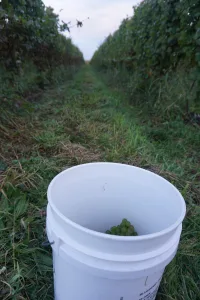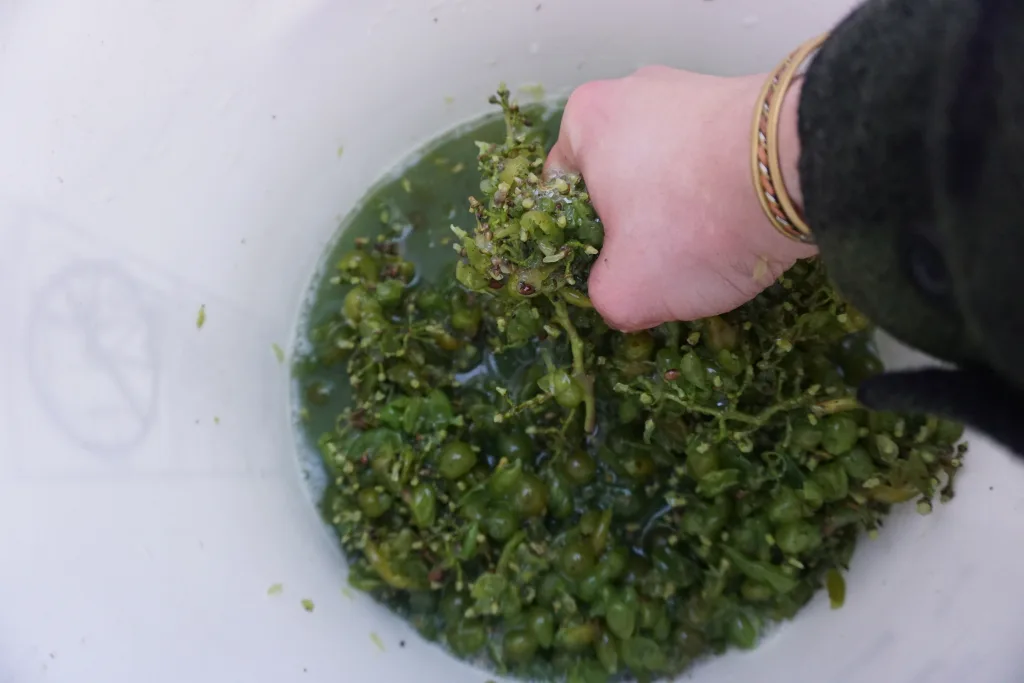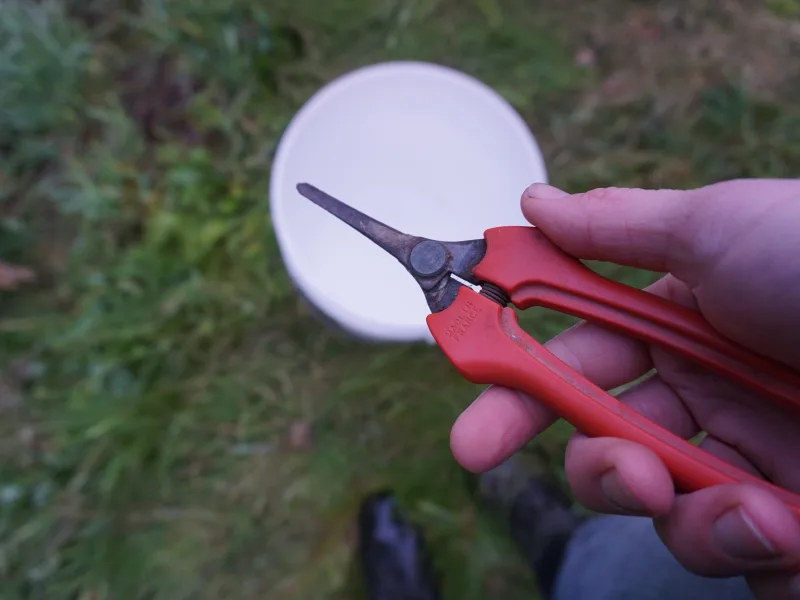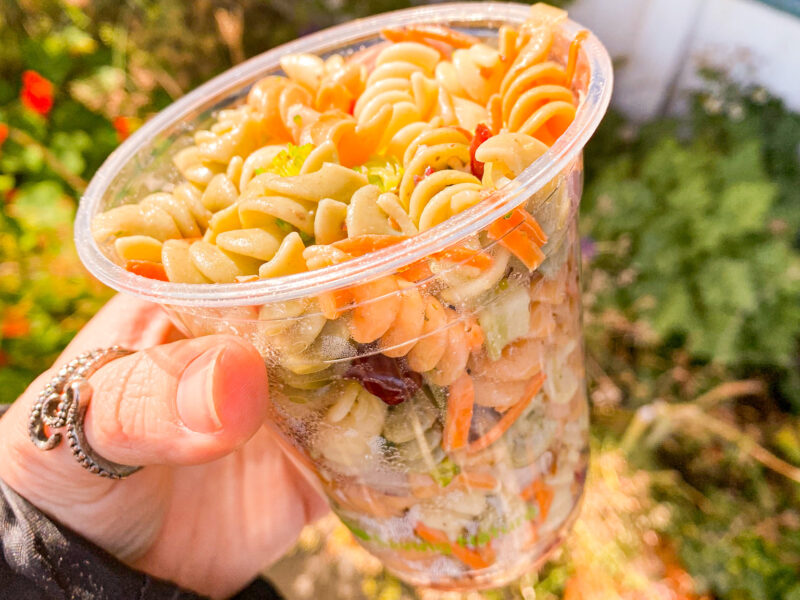A Gru-V Project

A photo of a vineyard post in Patrician Verona Vineyards, among a block of Gruner Veltliner. The tag shows what rootstock it’s grafted on and when it was planted. Photo: Emily Grazier
From the desk of Assistant Winemaker, Emily Grazier:
Last spring I spent three months working in New Zealand, at a winery in North Canterbury (South Island). This region just south of the Sauvignon Blanc empire Marlborough is becoming known for its cooler climate and its Rieslings. Greystone, the winery where I worked, has always been a touchstone for me in the wine world – one of their older bottlings is what really got me excited about wine early on. So I was absolutely thrilled to get to work there and learn from their winemaking team.

a cluster of gruner veltliner grapes hangs- ripe and ready to be picked! Photo: Emily Grazier
One of the projects that Greystone does every year that I was most excited to work on was their vineyard ferment series. For several of their Pinot Noir blocks (and, for the vintage I worked there, Syrah), members of the team will haul small open-top fermentation vessels, a tiny generator-powered destemmer, and assorted tools into the vineyard. The picking team (most of Greystone is hand-picked) will bring lugs of grape clusters to the fermenter stashed between the vines, and the winemaking team members will destem and crush the grapes into it. Then the vessel is loosely covered and ferments spontaneously for weeks with the ambient native yeasts in the vineyard.
As soon as I worked on this project at Greystone, I felt it would be quite interesting to try this out in some way at Hosmer. While the vineyard gets too cold to ferment red grapes to complete dryness, I remembered Head Winemaker Dominic talking about other iterations of the idea that Greystone had tried and I reached out to chat with him. Greystone had tried doing a starter culture in the vineyard and then bringing it into the winery to inoculate the juice or must. They ultimately preferred the results of the fermentation directly in the vineyard for their region, but I thought this idea seemed like a workable solution for the cooler climate of the Finger Lakes.
I also spoke with Anna-Katherine Mansfield, from the Cornell Ag Extension, for her suggestions on how to make the project workable in the Finger Lakes, and she had great advice and talked about other research that’s been done in the area.

A bucket with hand-picked grapes sits in between vineyard rows at Patrician Verona Vineyards. Photo: Emily Grazier
Gruner Veltliner was my go-to choice both because it produces a heavier crop than Riesling (more fruit to experiment with!), and because I’ve had some really exciting Austrian Gruners. We decided I would work with a batch of a hundred gallons, plus the small amount of grapes for the cuvee.
The morning we were due to pick the Gruner Veltliner was beautiful, crisp and sunny. I handpicked a bucket of clusters before the harvester went through, crushed them by hand and left them in the vineyard to pick up some yeast! The culture stayed in the vineyard for 48 hours before being strained off and left to continue fermenting. After a few more days, and a lot of fizzing, we decided it was ready to be pitched into the clarified Gruner juice.
The ferment was slow to take off, but eventually got there, fermenting fairly warm and quickly down to dryness with no interventions needed, eventually ending up with delicate smoky reduction, tropical aromas, and a pithy grapefruit finish. Like many of the white wines in the Hosmer program, the finished wine is resting on lees for depth and texture, and will be bottled as a one-off micro batch of wine in the summer! -EG

Hand squeezing some Gruner in a bucket to begin the fermentation process. Photo: Emily Grazier



